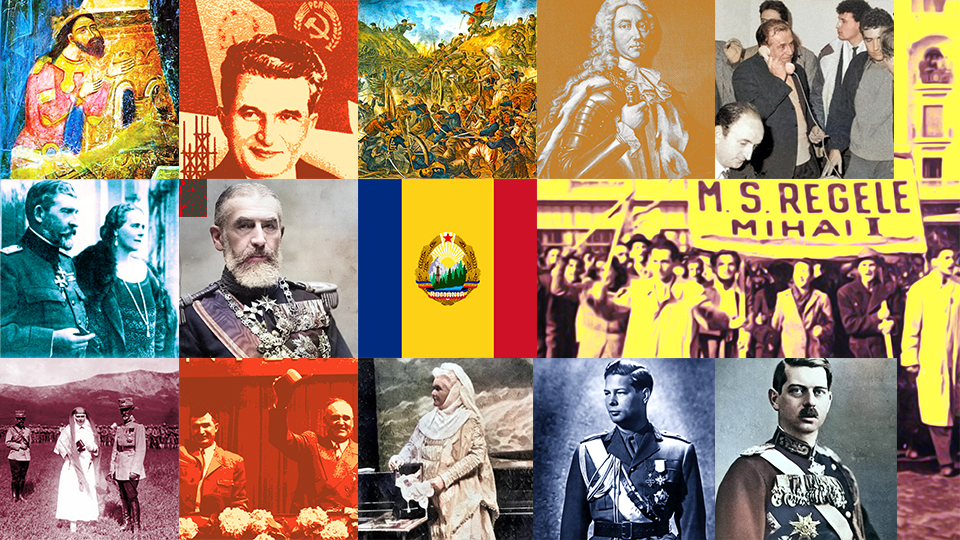Eva Heyman (1931-1944)
Eva Heyman, nicknamed Transylvanias Anne Frank, or the Anne Frank of Oradea, was one of the 1.5 million Jewish children to die in the Holocaust. She left a diary showing posterity the thoughts of a 13 year-old, describing the world of hatred and genocide she found herself in. We invited historian Marius Popescu from the Center for Jewish Studies in Romania to analyze Eva Heymans diary. Popescu told us how the ghetto in Oradea was set up. Oradea was also the native town of physician Miklos Nyszli, who erote the famous book “Auschwitz: A Doctors Eyewitness Account.”

Steliu Lambru, 22.01.2018, 13:06
Eva Heyman, nicknamed Transylvanias Anne Frank, or the Anne Frank of Oradea, was one of the 1.5 million Jewish children to die in the Holocaust. She left a diary showing posterity the thoughts of a 13 year-old, describing the world of hatred and genocide she found herself in. We invited historian Marius Popescu from the Center for Jewish Studies in Romania to analyze Eva Heymans diary. Popescu told us how the ghetto in Oradea was set up. Oradea was also the native town of physician Miklos Nyszli, who erote the famous book “Auschwitz: A Doctors Eyewitness Account.”
Marius Popescu: “Eva Heyman was a Jewish girl in Oradea, a town which had a large Jewish population. In terms of size, it was the second largest in Hungary, after Budapest, and on top of that it was a very restrictive ghetto, like most ghettos in Northern Transylvania. The Hungarian gendarmes were overzealous in carrying out their duties, with a fervor that amazed even Nazi executioners. Within an interval of only 2 weeks, the Jewish population was deported, and only the stories remained of what was once the thriving Jewish population of the Transylvanian cities.”
Eva Heyman started her diary on February 13, the day she turned 13. Her worries and anguish jump off the pages right from the start. Here is Marius Popescu: “When we read the diary of a child or adolescent, were supposed to read other kinds of things. However, this particular diary, reflects the absolutely tragic situation of the Jewish population at the time. Leafing through the diary, one of the most important things in there is Evas deep concern regarding her grandfathers pharmacy being seized, as a result of that extraordinarily restrictive law, which also included a strict curfew. Once her grandfathers pharmacy was seized, her familys situation became very precarious. An ethnic Hungarian took over the pharmacy without a qualm. On August 30, 1940, Northern Transylvania was ceded to Hungary, and Eva writes a few things about the expulsion of Romanians by the Hungarian authorities. In her diary she talks about how she could see a lot of new faces in town, how the town was changing, with lots of people coming there from Hungary. One of the reasons for which Evas grandfather had his business seized was because he was friendly to Romanians, because he was a Jew who did not support Hungarians. Which was, of course, onerous.”
However, the greatest shock was yet to come. Her best friend Marta vanished with her entire family. Marius Popescu: “A more important thing than the takeover of the pharmacy was related to her friendship with Marta, a girl her age that she spent her time with. They went out cycling, getting ice cream, visiting each other. Everything was fine up to a certain point in 1941. That was the year when the Hungarian authorities evacuated all Jewish people who could not prove their citizenship. Martas father was from Bukovina, but Marta was born in Oradea because that was her mothers town, so her father was evacuated. In 1941, the Jews rounded up by the Hungarian authorities were taken to Kamenetz-Podolsk and killed. Marta and her mother did not want to be separated from Martas father, so they were also killed. Psychologically, this is the key moment in the diary when we see Evas world changing radically. Not that it had been a happy world before, but the moment when her friend was taken away right from Evas house, taken to Kamenetz-Podolsk and killed, was the starting point of her ordeal. There isnt a single page in her diary where she does not mention Marta, ever present in her thoughts. Unfortunately, three years later, Eva had the same end, in the Auschwitz-Birkenau death camp.”
To the tragedies surrounding her on all sides, Eva Heyman had to also live with a sad family situation. Marius Popescu: “Things were fairly bad in her family as well. Her mother had divorced her father, she had remarried a leftist writer and journalist, Bela Zsolt, who became Evas adoptive father. During that time, it was not a good thing to be Jewish and also a left wing sympathizer. Evas mother and uncle Bela, as Eva called him, were not home much, as they kept hiding. Eva Heyman was mostly raised by her maternal grandparents. When we read the diary, we see that Eva had a fairly cold attitude towards her mother.”
The diary that Eva started on February 13, 1944, begins: “I have just turned 13. I was born on the 13th, on a Friday”. On October 17, 1944, when she was thirteen and a half and was suffering from typhus, Eva Heyman was sent to the gas chamber.





























